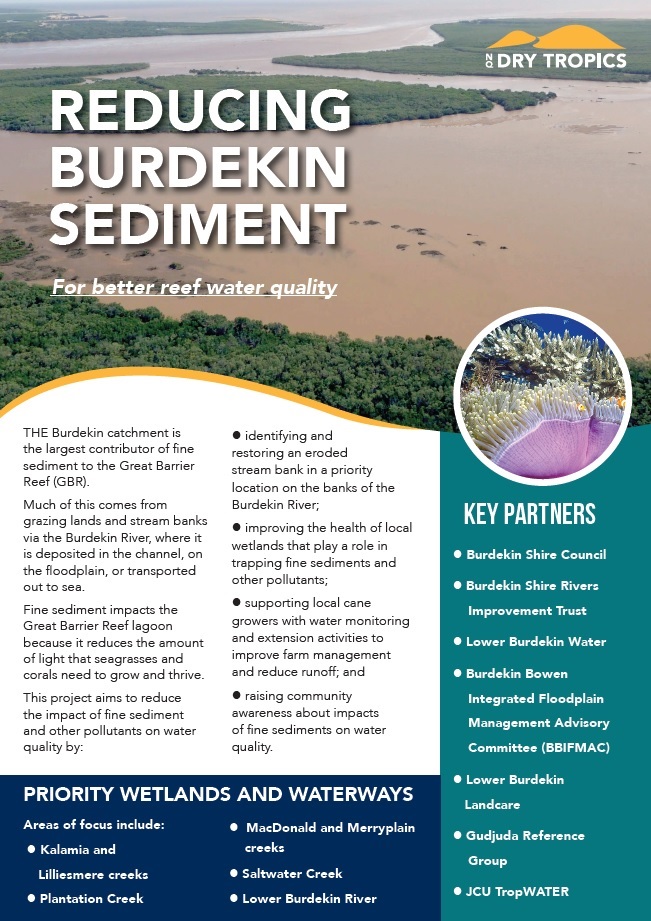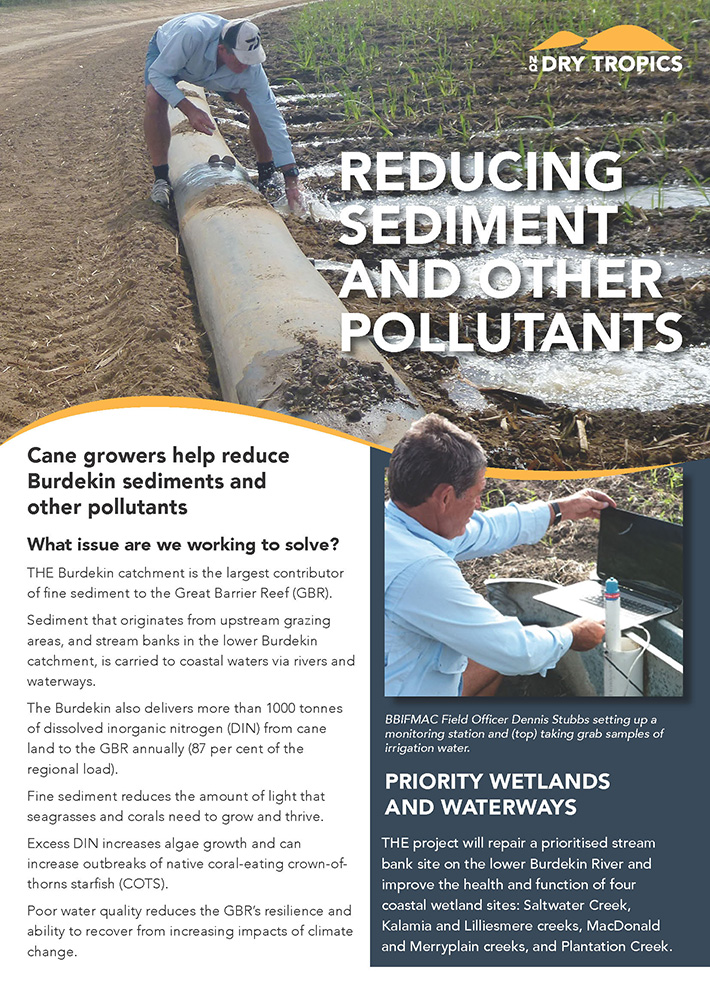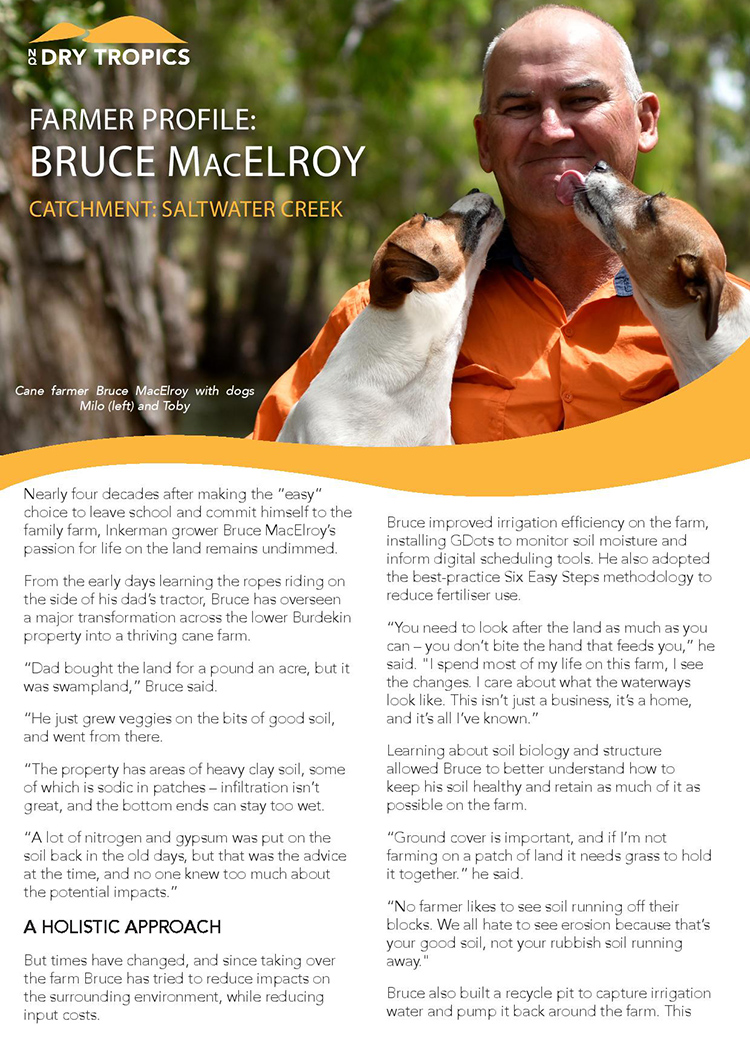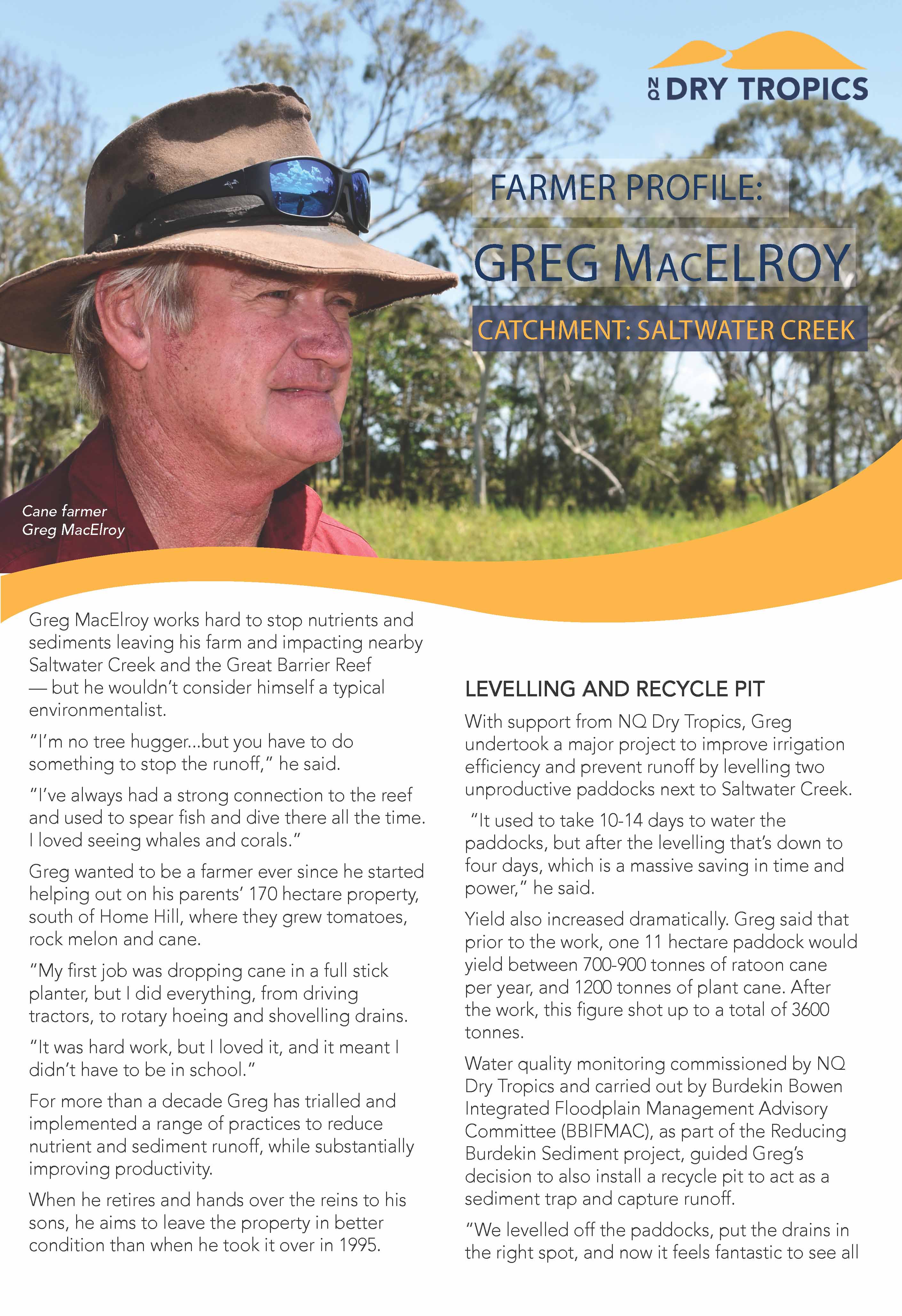Reducing Fine Sediment By Maintaining and Restoring Burdekin Stream Banks and Coastal Wetlands (2018-2022).
The Burdekin catchment is the largest contributor of fine sediment to the Great Barrier Reef (GBR). Much of this is caused by erosion from grazing lands and stream banks entering the Burdekin River, where it is either deposited in the channel, on the floodplain, or transported out to sea. Fine sediment is a problem because it makes water turbid, reducing the amount of light that seagrasses and corals need to grow and thrive.
This project aims to reduce the impacts of fine sediment on water quality from the Burdekin catchment by:
- repairing an eroded stream bank in a priority location;
- maintaining and improving the health of key local wetlands that play a role in trapping fine
sediments and other pollutants; - supporting cane growers adjacent to project sites with water monitoring and extension activities to improve farm management and reduce runoff; and
- raising community awareness about impacts of fine sediments on water quality.
Stream bank repair
This project will identify and restore a priority eroded stream bank site located on the banks of Lower Burdekin River. Gully, hillslope and streambank erosion can be caused a lack of ground cover and riparian vegetation. Heavy wet season rain falling on sparsely vegetated land creates short but intense flows that cause widespread soil erosion and runoff.
Waterways and wetlands in the Lower Burdekin
Wetlands and, waterways in the Lower Burdekin store water, help mitigate floods, and are used by the community for activities such as fishing and boating. They also provide critical habitat for many plants and animals. When wetlands capture water, they act as a filter by retaining sediments and other pollutants from runoff before they reach the the Great Barrier Reef lagoon. This can help increase the reef’s resilience and help it recover faster from events such as cyclones and bleaching.
Historically these water bodies would dry out seasonally, retreating to billabongs and small pools, keeping weeds in check and resetting the system. However, in recent decades, irrigation runoff from agriculture means they are not drying out as they should. This leads to weed chokes that prevent native fish such as barramundi and mangrove jack from migrating between freshwater breeding grounds and the sea.
This project will improve the health of wetlands and waterways, which will help them better capture and retain sediments and pollutants. Upgrades to local water management infrastructure will help to promote seasonal drying by preventing excess water entering the system. Aquatic weeds will be removed from priority locations.
Long term goals (5-10) years:
- Reduce fine sediments and other pollutants leaving project sites in the Lower Burdekin River and Lower Burdekin Delta.
- Restore the function of coastal wetlands in priority areas of the Lower Burdekin Delta.
Short term objectives (1-5) years:
- Repair streambank erosion issues in prioritised areas on the Lower Burdekin River.
- Repair prioritised coastal wetlands in the Lower Burdekin Delta.
- Engage communities and land managers in programs to improve water quality.
- Develop tools to better evaluate Reef water quality outcomes.
- Contribute new scientific knowledge.
Key partners:
- Burdekin Shire Council.
- Burdekin Shire Rivers Improvement Trust.
- Lower Burdekin Water.
- Burdekin Bowen Integrated Floodplain Management Advisory Committee (BBIFMAC).
- Lower Burdekin Landcare.
- Gudjuda Reference Group.
Prioritised wetland and waterway systems:
- Kalamia / Lilliesmere sub-catchment.
- Plantation Creek system.
- MacDonald / Merryplain wetland area.
- Saltwater Creek system.
Articles
Reports
The Reducing Fine Sediment by Maintaining and Restoring Burdekin Stream Banks and Coastal Wetlands project (2018-2022) is delivered by NQ Tropics and funded by the Queensland Natural Resource Investment Program.




